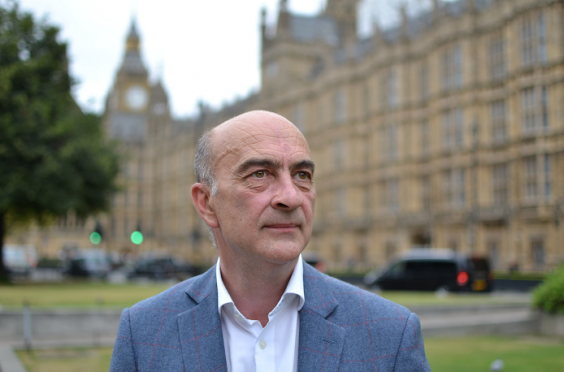All relationships sometimes get rocky. Even special ones. They sometimes need a guiding hand.
Thus the enduring picture of the Trump/May get together on Friday was the brief holding of hands as the president clasped the prime minister to guide her down a couple of steps in the White House. Or was he reaching out for her support?
But whichever it was and even if the occasion was not entirely a meeting of minds, it was a reminder that there is an enduring relationship of kindred spirit between the peoples of the USA and UK.
We are two countries bound by the bonds of history and, despite Churchill’s famous adage, bound by a common language.
Those bonds are greater and stronger and will endure regardless of the temporary incumbents of high office in either country.
They have been forged over centuries of shared interests and in the heat of battle. They are ties of history and hope.
As it was in Washington last week, so it is in Wales today at a meeting of the heads of government of countries with an even longer, stronger and more special, special relationship.
The constituent parts of our United Kingdom meet at the Joint Ministerial Council. A forum for our Westminster and devolved politicians to air their grievances but also to find common cause. To work together for better governance and for the good of the people who put them there.
Brexit will be the hot topic. Our place in the world will be shaped by events over the next 26 months. A little over 100 weeks of discussion, debate, negotiations and niggle. 750 days to decide our destiny. The search for new alliances and deals that can endure but that respect the democratic decisions taken by the people.
Domestically the elephant in the room will be Scottish independence. Which is where our first minister is on the horns of a dilemma.
She has a membership which is, largely and understandably, fixed on indyref2. And who want it sooner rather than later. But she knows too that the wider electorate don’t if all the polls are to be believed.
Yes, some people have switched from No to Yes. But at least as many have crossed the other way. There is a significant minority who wanted Indy, but who would rather now stay in the UK than be marched back into the EU under an independent Scotland.
In other words, the choice has become clear: which union matters most?
The new, and less special European one? Or the centuries old and more special British one? One of different languages and aspirations or one of common tongue and land?
And that choice is one of politics, currencies, trade, opportunities, practicalities, family, history, economics and pure gut.
The first minister’s dilemma is can enough of those dynamics shift in her direction? Does playing the “Scotland voted to remain” card cut it? Or has the dye been cast? Scotland voted to stay in the UK by a margin of 10%. The UK voted to leave the EU by 4%. The people spoke.
So again, the question of “which union?” demands an answer. It can no longer be both.
An independent Scotland in the EU could not have the same relationship with the rest of the UK which will soon be out of the EU.
The PM and the FM need the same outcome from Brexit. We might be leaving the EU single market, but Britain needs soft exit terms for a mutually beneficial basis to trade with it. Harsh terms for the UK make independence a harder sell for the SNP as an Indy Scotland in the EU would have those harsh terms of trade with its biggest foreign market. The rest of the UK.
Both Theresa May and Nicola Sturgeon lost their respective constitutional referendums.
Now both losers have the opportunity to win by making the most of what lies ahead. Both need the best Brexit deal. The prime minister for the sake of the UK. The first minister for the sake of her independence dream. And to allow her to say “let’s see how it goes, and save indyref2 for another time” and untangle herself from her horny dilemma.
So it might well be that they need each other.
They may never have a particularly special relationship but today they can, at least metaphorically, hold hands.
